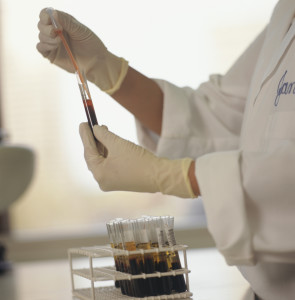Releasing Insulin Like Clockwork

Circadian clock controls insulin release, may influence development of diabetes

Scientists have shown that disruption of the body’s internal clock system is involved in a range of diseases, from psychiatric to metabolic to cardiovascular. A recent paper by JDRF-funded researcher Joseph Bass, M.D., Ph.D., suggests that it could also be a factor in the development of diabetes. Dr. Bass and his group found that disruption of the circadian rhythm set by the body’s internal clock led to glucose intolerance in mice, raising the possibility that it might have similar effects in people.
The timing of most biological activities—like eating and sleeping—is coordinated with the daily light cycle by the body’s master circadian clock, located in the brain. The master clock communicates with a network of peripheral clocks distributed in tissues and organs throughout the body, including the pancreas. Dr. Bass’s group previously found that the clock within the pancreas has roles in releasing insulin and normalizing blood-glucose concentration, but the details of how it does this were not understood. The new results show that the pancreatic circadian clock controls the compartments that carry insulin out of beta cells into the bloodstream, where it can modulate glucose levels, in both mouse and human islets. It does this by genetically regulating the abundance of molecules that form these compartments and guide their assembly and movement. Disrupting the clock prevented insulin release in adult mice, causing severe glucose intolerance.
More work is needed to characterize the potential role of circadian rhythm disruption in the development of diabetes. But by mapping the genetic targets of the pancreatic clock, the new results provide valuable information about the molecular pathways underlying insulin release. Internal clock function is also thought to influence gene pathways that regulate beta cell health, such that disruption of circadian rhythm may stress beta cells, ultimately contributing to their destruction. This suggests that Dr. Bass’s work has implications for both type 1 diabetes (T1D) and type 2 diabetes. He is currently exploring the role of circadian rhythm disruption in beta cell destruction and the development of T1D. The study aims to identify new targets for interventions and treatments that prolong beta cell survival and preserve or restore insulin release in people with T1D.
Why It Matters
Restoring natural insulin production in people with T1D holds the promise of a cure for the disease. Dr. Bass’s study suggests that circadian rhythm disruption could contribute to impaired insulin release and beta cell death; preventing or reversing this disruption could therefore provide a pathway to preventing or reversing T1D.
Learn More
To learn more or to support JDRF’s Restoration research program, please click here.